دوره آموزش ODI StudentGuide1-2
شرح دوره ODI StudentGuide1-2
دوره آموزشی ODI (Oracle Data Integrator) یک دوره مهم برای افرادی است که میخواهند با مفاهیم و تکنولوژیهای مربوط به یکپارچهسازی دادهها در محیطهای سازمانی آشنا شوند. Oracle Data Integrator ابزاری است که برای مدیریت و یکپارچهسازی دادهها به کار میرود و به کاربران کمک میکند تا دادهها را از منابع مختلف به طور موثر و با کارایی بالا منتقل کنند.
دانشجویان بعد از پایان دوره ODI StudentGuide1-2 یاد میگیرند:
از Oracle Data Integrator برای انجام تیدیل دادهها در میان پلت فرمهای مختلف استفاده کنید
از نقشههای ODI، روشها و بستهها برای انجام انجام تبدیلات داده ELT طراحی کنید
مدیریت منابع ODI و تنظیم امنیت در ODI را انجام دهید
یکپارچهسازی دادهها و تبدیل در میان پلت فرمهای مختلف را انجام دهید
از رابط گرافیکی ODIبرای تعریف رویهها، بستهها و کارهای ELT استفاده کنید
یک محیط امن و چند کاربره ODI را تنظیم و نگهداری کنید
با استفاده از ODI پیاده سازی CDC را انجام دهید
پیشنیاز دوره ODI StudentGuide1-2
دوره ODI StudentGuide1-2 پیش نیازی ندارد.
مخاطبین دوره ODI StudentGuide1-2
تحلیلگران کسب و کار
مدلسازان داده
مدیر انبار داده
مدیران پایگاه داده
مشاور فنی
مزایای دوره ODI StudentGuide1-2
- ارائه مدرک معتبر
- برگزاری دوره ها بصورت کاملا عملی
- استفاده از لابراتور مجهز
- استفاده از برترین اساتید داخلی و با مدرک بینالمللی
- با توجه به حضور گروه دوران در بیش از 1000 پروژه سازمانی، امکان معرفی دانشجویان دوره به بازار کار مرتبط به دورهها
- تخفیف جهت حضور در دورههای بعدی
- دريافت مدرک بينالمللی مرتبط
سرفصل دوره ODI StudentGuide1-2
Introduction to Integration and Administration
o Course Objectives
o Lesson Objectives
o Agenda
o Why Oracle Data Integrator?
o Conventional Integration Process: ETL
o Extract Load Transform (E-LT)
o ODI Architecture and Components
o ODI Architecture
o ODI Components: Overview
o Using ODI Studio
o Designer Navigator (Work Repository)
o Operator Navigator (Work Repository)
o Topology Navigator (Master Repository)
o Security Navigator (Master Repository)
o What Is an Agent?
o ODI Agents
o Three Types of Agents: Java EE, Standalone, Collocated Standalone
o Using the Three Types of Agents
o Standalone Agent: Example
o ODI Console
o Enterprise Manager FMW Console
o Management Pack for ODI for Enterprise Manager Cloud Control
o Management Pack for ODI for EM CC ODI Home Page
o Agenda
o ODI Repositories
o Master and Work Repositories
o Repository Setup: Example
o Repository Setup: Multiple Master Repositories
o Components: Global View
o Possible ODI Methodology
o Checklist of Practice Activities
o Starting Oracle Data Integrator
o Using Online Help
o Summary
Administering ODI Repositories
o Objectives
o Agenda
o Initial Repository Administration Tasks
o Steps to Set Up ODI Repositories
o 1.Run Repository Creation Utility
o 1a. Create Schemas
o 1b. Create Passwords and Tablespaces
o 2. Connect to the Master/Work Repository
o 3. Create a Wallet
o Connecting to the Master/Work Repository
o Exporting the Master Repository
o Importing the Master Repository
o Creating a Work Repository
o Changing the Work Repository Password
o Quiz
o Summary
o Checklist of Practice Activities
o Practice 2-1: Creating and Connecting to ODI Master and Work Repositories
ODI Topology Concepts
o Objectives
o Agenda
o What Is Topology?
o What Is in the Topology?
o Agenda
o What Is a Data Server?
o Data Servers: Examples
o Important Guideline 1
o What Is a Physical Schema?
o Physical Schemas: Properties
o Technology Terminology Among Vendors
o Important Guideline 2
o Agenda
o Infrastructure for Two Production Sites: Example
o ODI Design: Physical Architecture of the Two Production Sites
o Logical Schemas and Contexts
o What Is a Logical Schema?
o Important Guideline 3
o Logical Versus Physical Architecture
o Design Time Versus Run Time
o What Is a Context?
o A Context Maps a Logical to a Physical Schema
o Defining Contexts
o Mapping Logical and Physical Resources
o Agenda
o ODI Physical Agents
o Creating a Physical Agent
o ODI Agent Parameters
o Launching a Stand-Alone Agent: Examples
o Stopping the ODI Agent
o Deploying and Configuring a Java EE Agent
o Load Balancing: Example
o Important Guideline 5
o Infrastructure with Agents: Example
o Defining Agents: Example
o Special Case: Fragmentation Problem
o Special Case: Important Guideline 6
o Special Case: Defining the Physical Architecture
o Special Case: The Infrastructure
o Special Case: Physical Architecture in ODI
o Agenda
o Planning the Topology
o Matrix of Logical and Physical Mappings
o Summary
Describing the Physical and Logical Architecture
o Objectives
o Agenda
o What Topology Navigator Contains
o Topology Navigator: Overview
o Review: Context Connects Logical to Physical
o Objects You Create in the Practice
o Defining a Context
o Agenda
o Physical Architecture View
o Prerequisites for Connecting to a Server
o Important Note
o Creating a Data Server
o Creating a Data Server: JDBC
o JDBC Driver
o JDBC URL
o Creating a Data Server: JNDI
o Testing a Data Server Connection
o Creating a Physical Schema
o Agenda
o Logical Architecture and Context Views
o Creating a Logical Schema
o Creating a Logical Agent
o Editing a Context to Link Logical and Physical Agents
o Summary
Setting Up a New ODI Project
o Objectives
o Agenda
o What Is a Project?
o Oracle Data Integrator Projects: Overview
o How to Use ODI Projects in Your Work
o Creating a New Project
o Agenda
o What Is a Folder?
o Creating a New Folder
o Organizing Projects and Folders
o Agenda
o What Is a Knowledge Module?
o Types of Knowledge Modules
o Which Knowledge Modules Are Needed?
o Knowledge Modules: Examples
o Importing Knowledge Modules
o Replacing Existing KMs
o Knowledge Module Editor
o Editing a Knowledge Module
o Agenda
o Exporting and Importing
o Exporting an Object
o Importing an Object
o ID Numbers: Overview
o Import Types
o Choosing the Import Mode
o Import Report
o Agenda
o What Is a Marker?
o Tagging Objects with Markers
o Removing Markers
o Marker Groups
o Project and Global Markers
o Creating a Marker Group
o Summary
Oracle Data Integrator Model Concepts
o Objectives
o What Is a Model?
o Agenda
o Relational Model
o Relational Model: Tables and Columns
o Relational Model: Keys
o Relational Model: Foreign Keys
o Relational Model: Constraints
o Relational Model: Indexes
o Relational Model Support in ODI
o Additional Metadata in ODI
o Flex Fields
o Agenda
o What Is Reverse-Engineering?
o Methods for DBMS Reverse-Engineering
o Other Methods for Reverse-Engineering
o Standard Versus Customized Reverse-Engineering
o Reverse-Engineering Life Cycle
o Agenda
o Creating a Model by Reverse-Engineering
o Step 1: Creating and Naming a New Model
o Note: Creating and Naming a New Model
o Step 2: Defining a Reverse-Engineering Strategy
o Step 3: Starting the Reverse-Engineering Process
o Using RKM for Customized Reverse-Engineering
o Selective Reverse-Engineering
o Step 4: Fleshing Out Models
o Shortcuts
o Smart Export and Import
o Summary
Organizing ODI Models and Creating ODI Datastores
o Objectives
o Agenda
o What Is a Model Folder?
o Creating a Model Folder
o What Is a Submodel?
o Creating a Submodel
o Organizing Datastores into Submodels
o Setting Up Automatic Distribution
o Agenda
o Creating Datastores
o Creating a Datastore in a Model
o Adding Columns to a Datastore
o Agenda
o What Is a Constraint in ODI?
o Constraints in ODI
o Creating a Mandatory Column
o Agenda
o Creating a Key
o Checking a Key
o Creating a Reference
o Creating a Simple Reference
o Creating a Complex Reference
o Checking a Reference
o Agenda
o Creating a Condition
o Checking a Condition
o Agenda
o Audit/Explore: When and Why
o Audit/Explore Process: Overview
o Agenda
o Displaying the Contents of a Datastore
o Viewing the Distribution of Values
o Analyzing the Contents of a Datastore
o Agenda
o Defining Business Rules in ODI
o From Business Rules to Constraints
o Deducing Constraints from Data Analysis
o Testing a Constraint
o Auditing a Model or Datastore
o Reviewing Erroneous Records
o Summary
ODI Mapping Concepts
o Objectives
o Agenda
o What Is a Mapping?
o Business Rules for Mappings
o Where Are the Rules Defined?
o Agenda
o What Is an Expression?
o What Is a Join?
o What Is a Filter?
o What Is a Lookup?
o What Is a Set?
o What Are Some of the Others?
o New with Patch: Pivot and Unpivot
o Agenda
o How Does ODI Implement Business Rules?
o Business Problem
o Implementing the Rules
o Integration Process
o Process Details
o Process Implementation: Example
o Process Implementation: Example
o Process Implementation: Example
o Agenda
o What Is the Staging Area?
o Execution Location
o Agenda
o From Business Rules to Processes
o Knowledge Modules
o What Is a Knowledge Module?
o Code Generation
o KM Types Used in Mappings
o Agenda
o Purpose of a Mapping
o What Is an Expression?
o Creating a One-to-One Mapping
o Creating and Naming a Mapping
o Defining the Target Datastore
o Multiple Targets
o Defining the Source Datastore
o Connecting the Ports to Make the Map
o Defining the Expressions
o Valid Expression Types
o Saving the Mapping
o Running the Mapping
o Summary
Designing Mappings
o Objectives
o Agenda
o Multiple-Source Datastores
o Creating a Join Manually
o Advanced Joins
o Types of Joins
o Setting Up a Join
o Creating Lookups
o Using Lookups
o Agenda
o Filters in ODI
o Defining a Filter Manually
o Setting Up a Filter
o Agenda
o Physical Mapping Diagram
o Flow in the Physical Diagram
o What Defines the Flow?
o Scenario
o Basic Process
o Agenda
o Purpose of a Staging Area
o Placing the Staging Area
o Important Note
o Specifying the Staging Area
o Agenda
o Options for Expressions
o Setting Options for Expressions
o Disabling an Expression
o Enabling a Mapping for Inserts or Updates
o Agenda
o Execution Location and Syntax
o Why Change the Execution Location?
o Changing the Execution Location
o ODI Mapping Execution Simulation
o Agenda
o Which KMs for Which Flow?
o Knowledge Modules: Additional Information
o Identifying IKMs and LKMs
o IKMs and LKMs: Strategies and Methods
o Specifying an LKM
o Specifying an IKM
o Common KM Options
o Flow: Example 1
o Flow: Example 2
o Flow: Example 3
o Summary
Mappings: Monitoring and Troubleshooting
o Objectives
o Agenda
o Operator Navigator: Viewing the Log
o Using Operator Navigator
o Hierarchy: Sessions, Steps, Tasks
o Viewing Details of Sessions, Steps, and Tasks
o Monitoring Execution of an Mapping
o Troubleshooting a Session
o Identifying the Error
o Reviewing the Code
o Fixing the Code and Restarting the Session
o Fixing the Mapping
o Keys to Reviewing the Generated Code
o Agenda
o Common Errors and Symptoms
o Important Note
o Tips for Preventing Errors
o Using Attribute Panel for Quick Edits
o Summary
Designing Mappings: Advanced Topics 1
o Objectives
o Agenda
o Business Rules in Mappings
o Business Rule Elements
o More Elements
o Expression Editor
o Agenda
o Using a Variable in Code
o Binding Versus Substitution
o Case Sensitivity
o Agenda
o Defining a Dataset
o Using Set-Based Operators
o Example of SET: UNION
o Agenda
o Types of Sequences
o Support for Native Sequences
o Creating a Native Sequence
o Referring to Sequences
o Note: Sequences Updated by Agent
o Using Standard Sequences in Mappings Correctly
o Using ODI Standard Sequences in Mappings
o Populating Native Identity Attributes
o Sequences: Best Practices
o Automatic Temporary Index Management
o Tracking Variables and Sequences
o How Variable and Sequence Tracking Works
o Variable Actions
o Definition Tab of Session Step or Session Task
o Summary
Designing Mappings: Advanced Topics 2
o Objectives
o Agenda
o Partitioning
o Definition in Datastore After Reverse-Engineering
o Using Partitioning in a Mapping
o Agenda
o Reusable Mappings
o Using Reusable Mappings: Example
o Derived Select (Subselect) for Reusable Mappings
o Agenda
o What Is a User Function?
o Why Use User Functions?
o Properties of User Functions
o Using User Functions
o Creating a User Function
o Defining an Implementation
o Syntax and Implementations
o User Functions at Design Time
o User Functions at Run Time
o Note: Functions in Execution Log
o Agenda
o Using Substitution Methods
o Substitution Methods: Examples
o Agenda
o Description of KM Steps
o Details of the Steps
o Setting KM Options
o Developing Your Own KM: Guidelines
o Complex File Technology
o Summary
Using ODI Procedures
o Objectives
o Agenda
o What Is a Procedure?
o Procedure: Examples
o Creating Procedures: Overview
o Agenda
o Creating a New Procedure
o Agenda
o Creating a Command
o Arranging Tasks in Order
o Which Parameters Should Be Set?
o Valid Types of Commands
o More Elements
o Why Use a Source Command?
o Agenda
o Types of Options
o Creating a New Option
o Making a Command Optional
o Using an Option Value in a Command
o Agenda
o Procedure Execution
o Using the Operator Navigator to View Results
o Summary
Using ODI Packages
o Objectives
o Agenda
o What Is a Package?
o Creating a Package
o Agenda
o Creating and Naming a Package
o Package Diagram
o Package Diagram Toolbar
o Agenda
o Package Steps
o Creating a Package Step
o What Is an ODI Tool?
o Creating an ODI Tool Step
o Tool Steps: Best Practices
o Agenda
o Sequencing Steps
o A Simple Package
o Sequencing Package Steps
o Agenda
o Executing a Package
o Agenda
o Basic Step Types
o Advanced Step Types
o Agenda
o Creating Model, Submodel, and Datastore Steps
o Models, Submodels, and Datastore Steps
o Agenda
o Creating a Variable Step
o Variable Steps
o Agenda
o Controlling Execution
o Error Handling
o Creating a Loop
o The Advanced Tab
o Summary
Step-by-Step Debugger
o Objectives
o Agenda
o Overview
o Agenda
o Process Overview
o Starting a Session in Debug mode
o Specifying Debug Properties
o Control Execution Flow
o Screen Step Numbering
o Agenda
o New Functionalities
o Benefits for End Users
o Agenda
o Debug Toolbar
o Toolbar: Current Cursor
o Toolbar: Get Data
o Toolbar: Step Into
o Toolbar: Run to Task End
o Toolbar: Run to Next Task
o Toolbar: Run to Step End
o Toolbar: Run to Next Step
o Toolbar: Pause
o Toolbar: Resume
o Summary
Managing ODI Scenarios
o Objectives
o Agenda
o What Is a Scenario?
o Properties of Scenarios
o Agenda
o Scenario-Related Tasks
o Generating a Scenario
o Regenerating a Scenario
o Generation Versus Regeneration
o Executing a Scenario from the GUI
o Executing a Scenario from a Command Line
o Executing a Scenario from a Package
o Exporting a Scenario
o Agenda
o Preparing Scenarios for Deployment
o Automating Scenario Management
o Scheduling the ODI Scenario
o Scheduling ODI Scenario with External Scheduler
o Managing Schedules
o Summary
Using Load Plans
o Objectives
o Should You Organize Executions with Load Plans?
o What Are Load Plans?
o Load Plan Editor 5 Load Plan Steps
o Defining the Restart Behavior
o Are Load Plans Substitutes for Packages or Scenarios?
o Benefits of Using Load Plans
o Handling Failed Load Plans
o Summary
Enforcing Data Quality with ODI
o Objectives
o Agenda
o Why Data Quality?
o When to Enforce Data Quality
o Data Quality in Source Applications
o Data Quality Control in the Integration Process
o Data Quality in the Target Applications
o Agenda
o Data Quality Business Rules
o From Business Rules to Constraints
o Agenda
o Data Quality System: Overview
o Static and Flow Controls: Differences
o Data Quality Control: Properties
o Synchronous Control
o What Is a Constraint?
o What Can Be Checked?
o Enforcing Data Quality in a Mapping
o Agenda
o Setting Up Static or Flow Control
o Enabling Static or Flow Control
o Agenda
o Setting the Physical Options
o Setting the Logical Options
o Agenda
o Selecting Which Constraints to Enforce
o Selecting Which Constraints to Check
o Differences Between Control Types
o Agenda
o Reviewing Erroneous Records
o EnterpriseDataQuality Tool
o Using the EDQ Tool
o Summary
Working with Changed Data Capture
o Objectives
o Why Changed Data Capture?
o CDC Techniques
o Changed Data Capture in ODI
o Journalizing Components
o CDC Infrastructure in ODI
o Simple Versus Consistent Set Journalizing
o Limitations of Simple CDC Journalizing: Example
o Consistent CDC Journalizing
o Consistent CDC: Infrastructure
o Setting Up Journalizing
o Setting CDC Parameters: Example
o Adding a Subscriber: Example
o Starting Journal: Example
o Journalizing Status
o Viewing Data/Changed Data: Example
o Using Changed Data
o Oracle GoldenGate Integration
o Oracle GoldenGate Integration in ODI 12c
o Summary
Advanced ODI Administration
o Objectives
o Agenda
o Introduction to ODI Security Navigator
o Security Concepts: Overview
o Defining Security Policies
o Creating Profiles
o Using Generic and Nongeneric Profiles
o Built-in Profiles
o Creating Users
o Assigning a Profile to a User
o Assigning an Authorization by Profile or User
o Defining Password Policies
o Setting User Preferences
o ODI Security Integration: Overview
o Implementing External Authentication (OPSS)
o Implementing External Authentication (OPSS): Switching the AuthenticationMode
o Implementing External Password Storage
o Agenda
o Types of ODI Reports
o Generating Topology Reports
o Generated Topology Report: Example
o Version Comparison Report: Example
o Generating Object Reports
o Agenda
o Integration of ODI with Enterprise Manager
o Java EE Agent and Enterprise Manager Configuration with WebLogic Domain: Overview
o Using ODI Console: Example
o Summary
دوران آکادمی زیر مجموعه گروه دوران، مجری برگزاری دوره ODI StudentGuide1-2 در قالب آموزش بانک اطلاعاتی به صورت آموزش آنلاین و حضوری با بهرهگیری از لابراتور آنلاین اختصاصی بهمراه گواهی معتبر ارائه میشود.
| نوع دوره |
|---|
رایگان

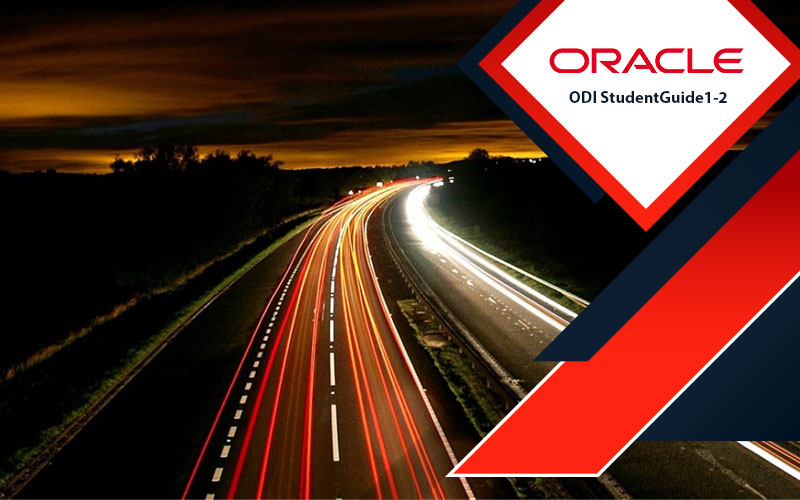
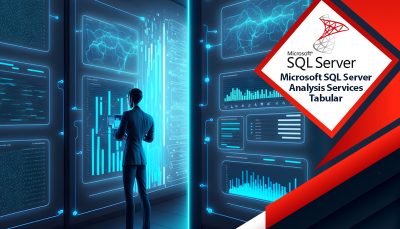
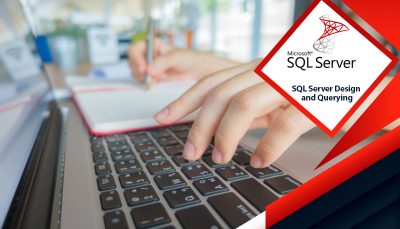
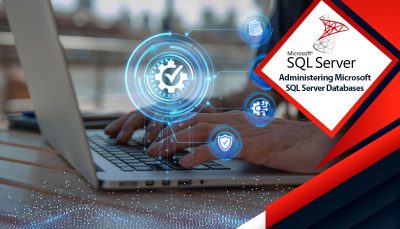

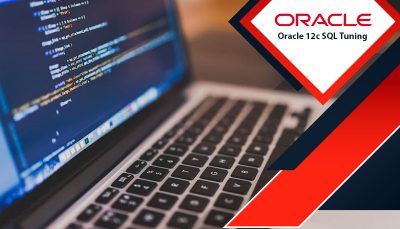

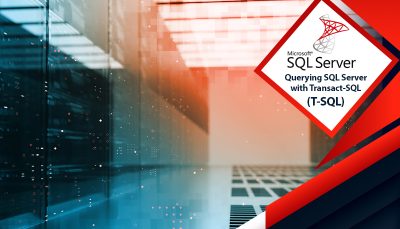


دیدگاهها
هیچ دیدگاهی برای این محصول نوشته نشده است.